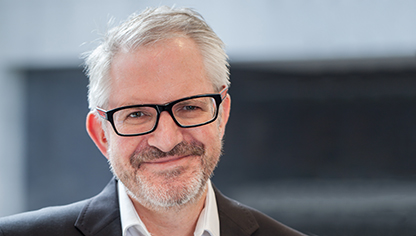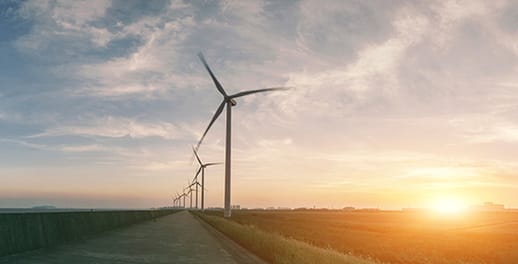“A just energy transition” is a phrase one often hears these days, which refers to the need to recognise countries' developmental, social and sustainability needs as we make the move from fossil fuels to renewable sources of energy. It’s a particularly important issue for emerging economies like South Africa and its neighbours in Sub Saharan Africa, which are currently still heavily dependent on coal and other fossil fuels to achieve their growth requirements and support their development goals.
Whereas developed economies may be able to roll out decarbonisation programmes strategies relatively effectively in the coming years (helped by stable demand thanks to static or falling populations), this luxury is not available to emerging economies like South Africa that remain energy constrained.
One solution is to turn to a transitional energy source, in the form of natural gas. Natural gas has, for example, been championed as an energy source for many years by Czech-Canadian scientist and author Vaclav Smil.
In his 2015 book, Natural Gas: Fuel for the 21st Century, Smil pointed out that natural gas is the cleanest of the fossil fuels, causing less air pollution and releasing less in the way of carbon emissions than diesel or coal. With large supplies of resources, the extension of gas pipelines (notwithstanding the supply issues caused by the Russian invasion of Ukraine) and the expansion of the liquefied natural gas (LNG) trade, there is a ready global market for this fuel.
As such, it is an excellent transitional energy source for countries like South Africa to move from traditional fossil fuels to renewable sources.
This is a view shared by Dieter Matzner, a power and infrastructure consultant at Investec Bank. He argues that natural gas is a cost effective energy source capable of being rolled out in a relatively short space of time – two relevant advantages for a power-constrained economy such as South Africa.
“Gas-fired power will be cheaper than the current diesel-fired power provided by Eskom and Engie’s peaker power plants,” he elaborates.
“And gas-fired power can be quickly deployed (in six to 12 months), for example through mobile units or barges. These can credibly bridge the supply gap while longer-term alternatives are being pursued.”
Matzner adds that these solutions have the added advantage of not needing to be signed up for long-term supply contracts and can be signed up for three to five-year terms with options to renew if necessary. There are also a number of potential suppliers available.
This is particularly relevant with Eskom having to decommission about 22GW of coal-fired power plants by 2035 and another baseload capacity of about 12GW by 2045.
“The amount of renewable generation capacity that would have to be constructed over the next 20 years, just to replace the current amount of energy consumed, will require the construction of at least 5 to 6 GW of solar photovoltaic (PV) and wind power per year, starting now,” Matzner explains. In addition, a combination of short-term battery energy storage (up to four hours) and pumped hydro projects for long-term energy storage (over six hours) need to be incorporated into such a construction programme to deliver a dependable power supply system.
Matzner says this construction effort underestimates what would be required in terms of the timescales it would take to secure all the project permits, sign offtake agreements, arrange financing, build and then connect to the grid. “The programme has been characterised by processes of strategising, decarbonisation discussions, technology options for power generation and storage, least cost options, development of local gas fields, etc. All of these have added to, and continue to add to, the timelines, with all that this implies for increased load shedding over the next five years and perhaps even longer,” he warns.
Matzner adds that there is a debate going on in the market about filling the 4,000 to 6,000 MW generation capacity gap by building massive battery storage. He says sufficient renewable power is unlikely to be put in place to within the next two years to make this happen, despite some views to the contrary.
“By rolling out natural gas projects, we have an opportunity to scale up quickly while we build up our renewable capability,” he argues.
Natural gas can fulfil a transitional roll in other ways as well, he says. “Most of the major gas-fired power plant equipment providers – for gas turbines as well as gas engines – have demonstration plants currently in development and testing,” he says. The gas-fired plants that are being developed today can in future (certainly by 2030) be upgraded to be between 30% and 100% fuelled by green hydrogen/ammonia/methanol (by volume), depending on when these fuels become commercially available and can compete with natural gas pricing.
“This implies that any gas-fired power plants, whether operated as peakers or mid-merit power plants, can be converted within the next 10 years, should these new green fuels become commercially available and are competitive.”
While it’s unlikely that green hydrogen/ammonia/methanol will be available on a commercial scale before 2035 in South Africa, it nonetheless makes sense to incorporate gas-fired power plants into the local power generation market strategy, as a source of additional green hydrogen once this becomes viable.
About the author

Patrick Lawlor
Editor
Patrick writes and edits content for Investec Wealth & Investment, and Corporate and Institutional Banking, including editing the Daily View, Monthly View, and One Magazine - an online publication for Investec's Wealth clients. Patrick was a financial journalist for many years for publications such as Financial Mail, Finweek, and Business Report. He holds a BA and a PDM (Bus.Admin.) both from Wits University.





